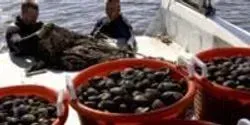ocean sciences

Nanomaterials commonly used in sunscreens and boat-bottom paints are making sea urchin embryos more vulnerable to toxins, according to a study from the University of California, Davis. The authors said this could pose a risk to coastal, marine and freshwater environments.

A sampling of more than 1,000 Gulf of Mexico fish, shrimp, oysters and blue crabs taken from Cedar Key, Fla., to Mobile Bay, Ala., between 2011 to 2013, shows no elevated contaminant levels, according to a seafood safety study conducted by Dr. Andrew Kane and colleagues at the University of Florida. In fact, some 74 percent of the seafood tested showed no quantifiable levels of oil contaminants at all.

The dispersant used to remediate the 2010 Deepwater Horizon oil spill in the Gulf of Mexico is more toxic to cold-water corals than the spilled oil, according to a study conducted at Temple University. The study comes on the eve of the spill’s fifth anniversary, April 20.

Johns Hopkins environmental scientists are collaborating with researchers from Dolphin Island at Resorts World Sentosa, Singapore, to learn more about how and where mercury accumulates in the bodies of Indo-Pacific bottlenose dolphins.

Ocean researchers like to say we know less about the Earth’s seas than the moon. With less than 5 percent of the world’s oceans explored, big discoveries await. To find them, University of Rhode Island students are learning to build the next generation of autonomous underwater vehicles, or AUVs, used to map seafloors, study ocean movement, locate sunken objects, research sea life and more.

The first nationwide vulnerability assessment for ocean acidification, published today in Nature Climate Change, shows that coastal communities in 15 states that depend on the nation’s approximately $1 billion shelled-mollusk (e.g., oysters and clams) industry are at long-term economic risk from ocean acidification.

When oil from the Deepwater Horizon spill first began washing ashore on Pensacola Municipal Beach in June 2010, populations of sensitive microorganisms, including those that capture sunlight or fix nitrogen from the air, began to decline. At the same time, organisms able to digest light components of the oil began to multiply, starting the process of converting the pollutant to carbon dioxide and biomass.











